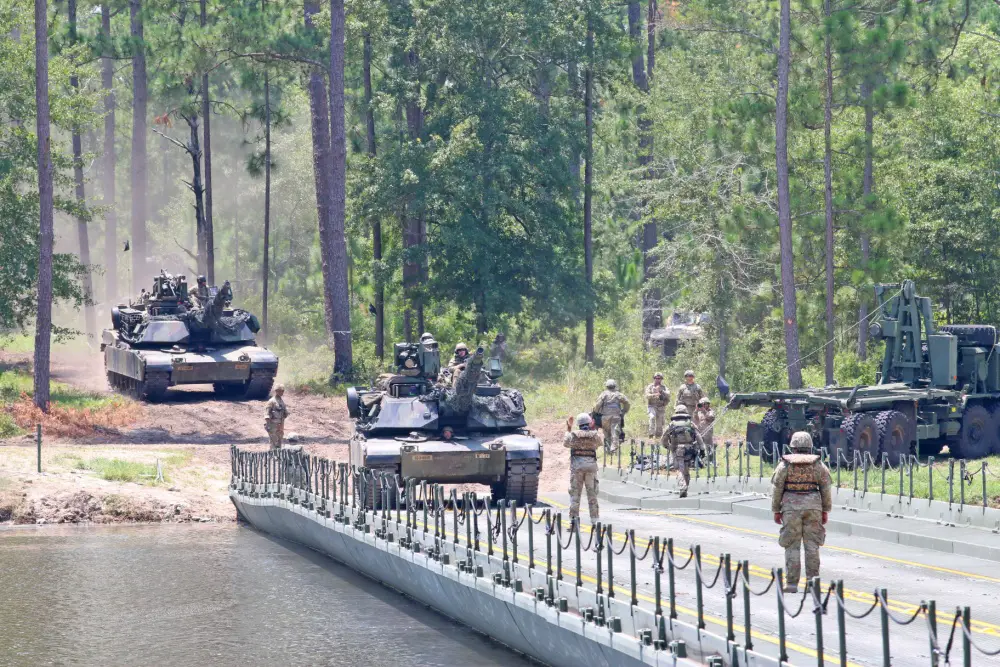The U.S. Army defines a gap as a ravine, mountain pass, river, or other terrain feature that presents an obstacle that may be bridged. For a maneuver unit such as the armored brigade combat teams of the 3rd Infantry Division, reaching an objective quickly takes the initiative away from the enemy and enables decisive victories on the battlefield. For a wet gap crossing to be successful, the far side must be secured, first with indirect artillery fires, and ultimately from infantry who, in the wet gap crossing training scenario, were ferried across in Combat Rubber Raiding Craft piloted by Soldiers of the 310th Multi-Role Bridge Company. The 310th MRBC also constructed a raft using interior bays and ramps to ferry two M2 Bradley Fighting Vehicles across the wet gap.

Key objectives on the battlefield are often situated near rivers. When alternative avenues of approach are heavily defended, a water crossing, or what the Army refers to as a wet gap crossing, can be a critical course of action for the battlefield commander to consider. In nearly all of the conflicts in which the Army has fought, wet gap crossings have resulted in seizing key terrain. In World War II, it was the allied forces crossing the Rhine River. More recently, during the initial invasion of Iraq in 2003, a wet gap crossing was established to allow tanks from 3ID to cross the Euphrates River on its approach to Baghdad.

“We were able to demonstrate the lethality of the Raider Brigade; our attack to seize the far side and keep the fight going against our enemy,” said Maj. Gary Brooks, 10th BEB operations officer and planner for the wet gap crossing. “The bridge companies allowed us to get our armor from the near side to the far side as fast as possible to maintain tempo, regain contact with the enemy, and continue with our objectives.”
“This is what we do in the real world,” said 1st Lt. Sara Burke, MRBC commander. “When we deploy, we are going to be integrated with maneuver units. We’re proficient at building bridges, but with joint training such as today, we’re experiencing the timelines set by the maneuver unit, we’re receiving enemy fire; we’re learning how to get all their Soldiers across safely and keep our soldiers safe. Without joint training such as this, the mission will not be possible.”

Although wet gap crossings are far and few between, the capability to quickly move tanks, heavy vehicles, equipment and personnel from one river bank to the other is essential for the success of maneuver units. 3ID’s 3rd Battalion, 69th Armor Regiment, 1st Armored Brigade Combat Team, teamed up with Raider Brigade’s 10th Brigade Engineer Battalion and reserve units of the 926th Engineer Brigade, to plan and execute a wet gap crossing of Pineview Lake, July 17, 2020, at Fort Stewart, Georgia. Senior leaders from throughout XVIII Airborne Corps, which included Lt. Gen. Michael “Eric” Kurilla, XVIII ABC commander; and Maj. Gen. Tony Aguto, 3ID commander, were on hand, not only to observe, but to gain hands-on experience in building an Improved Ribbon Bridge and rafts capable of transporting M1 Abrams tanks and M2 Bradley Fighting Vehicles.













